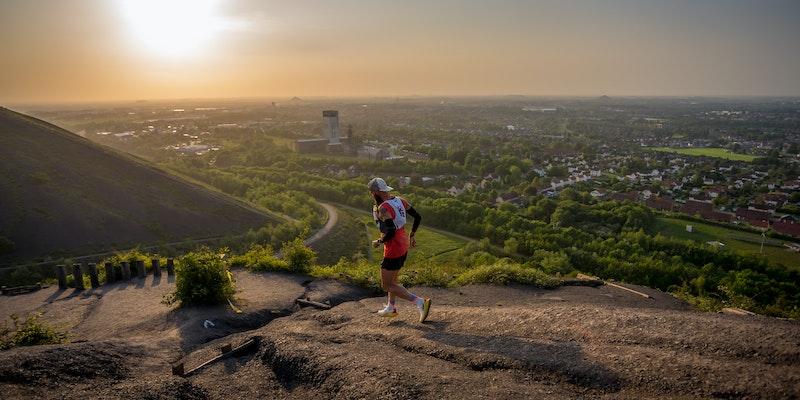Why Hill Running is a Game-Changer
Nov 02, 2023 By Nancy Miller
Hill running is an exhilarating challenge and a beneficial workout that can significantly enhance your overall fitness and running performance. Many runners shy away from hills primarily because of the perceived difficulty. Yet, integrating hills into your routine can provide rewards that flat terrain simply can't match. Let’s explore the numerous hill running benefits and how they can significantly impact your running regimen.
Building Strength through Hill Running
Hill running is a testament to the power of nature's resistance training. Each step you take uphill doesn't just cover ground but actively challenges the pull of gravity. This confrontation targets and intensifies the training of particular muscle groups, bringing forth numerous benefits.
Calves
Every ascent on a hill stresses the calf muscles, gradually increasing strength in this region over consistent hill running sessions. The more you challenge them, the more they adapt, growing stronger with every run.
Quadriceps and Hamstrings
Hills put these muscles to the test. With each climb, they labor more than they would on a flat surface, boosting their endurance and robustness.
Glutes
The upward trajectory of hill running necessitates a heightened push-off during each stride. This process actively engages and shapes the glutes, offering a natural toning exercise with every hill you conquer.
Hip Flexors and Achilles' Tendons
These crucial areas experience an intensified workout during uphill runs. Their consistent engagement not only strengthens them but also aids in enhancing flexibility.
Speed Improvement through Hill Workouts
The concept of speed is counterintuitive when discussing uphill challenges. However, hill running directly and positively affects a runner's pace. The upward battle doesn’t just build endurance but refines the raw power and quickness of a runner.
The uphill progression actively involves the same muscles playing during sprints. As a result, the more you train on hills, the more you enhance these sprinting muscles, and this correlation leads to a noticeable increase in overall running speed.
Hill repeats stand out as a particularly effective hill running workout. The method is clear-cut:
- Find a hill spanning 100 to 200 meters.
- Sprint up with all the energy you can muster.
- Allow yourself a recovery period by walking or jogging back down.
Intensifying Workouts and Calorie Consumption
When it comes to hill running, the game's name is intensity. The moment you start your upward journey, your heart pumps faster, and your breaths deepen. These physiological reactions are not just for show – they indicate your body is working harder. For many, hill running is a surefire way to enhance workout intensity. Even if your speed doesn't pick up, the effort is palpable.
A distinct feature of hill workouts is their potential to burn more calories than running on level surfaces. Though this might seem obvious, the degree of increased calorie burn might surprise many. Factors such as the steepness of the hill and a person's unique metabolism play a role in determining this. Yet, the overarching message is clear: heading to the hills might be the way to go if you want to shed some extra calories. This aspect adds another dimension to the hill running benefits many athletes and fitness enthusiasts swear by.
Overcoming Monotony

There's a rhythm to running that some find soothing. But it can become monotonous when the same rhythm echoes daily on flat terrains. This is where hill running swings into action as an antidote to the mundane. The unpredictability and challenges of different inclines can be a game-changer for runners seeking variety.
Every hill presents a unique challenge. Some are steep and short, requiring energy, while others are long, gradual endurance tests. By introducing such variations, hill running ensures that the body and mind remain alert and engaged. It's a refreshing break from the monotony of predictable flat courses.
Reducing Injury Risks
One aspect of hill running that often goes unnoticed is its potential to safeguard runners from injuries. It's easy to think of hill runs as merely strength-building exercises. However, the implications go beyond muscle development. Engaging in uphill and downhill runs is a conditioning exercise, prepping the muscles for varied terrains and inclines.
As you power through an uphill run, the engagement from your glutes and hamstrings becomes evident. These muscles are critical for propelling you forward against the gravitational pull. In contrast, when descending, your knees play a crucial role, supported significantly by your quadriceps. This balance between ascent and descent ensures a comprehensive leg workout, reinforcing muscles and joints.
Preparing for Races with Hill Training
Hill challenges during race events can catch many runners by surprise, turning an otherwise smooth race into a grueling test of endurance and strength. Regular hill training can act as a safeguard, priming your body to handle such unexpected hurdles easily. By consistently incorporating hill running workouts into your routine, you prepare your muscles and mind to address the specific demands of uphill running.
When you've regularly faced and overcome inclines during your training, encountering them during a race becomes less of an obstacle and more of an opportunity to showcase your preparedness. It's essential to research and know the type of terrain you might face during your race. Simulating those conditions during training can prove invaluable if you know certain challenging inclines in an upcoming race.
Enhancing Upper Body Strength

When you think of running, especially hill running, it's easy to focus solely on the legs. After all, they bear the brunt of the effort. However, what's often overlooked is the considerable involvement of the upper body, especially when running uphill. As the gradient increases, so does the need for a stronger arm drive, engaging the arms and the core and upper torso.
The rhythm between your legs and arms becomes more pronounced during uphill running. This coordination, especially the mighty swing of the arms, plays a crucial role in maintaining momentum and balance. Consequently, this movement provides a substantial workout to your upper body, especially your shoulders, back, and core. While it's no substitute for targeted upper body exercises, hill running offers an auxiliary method to strengthen these regions.








